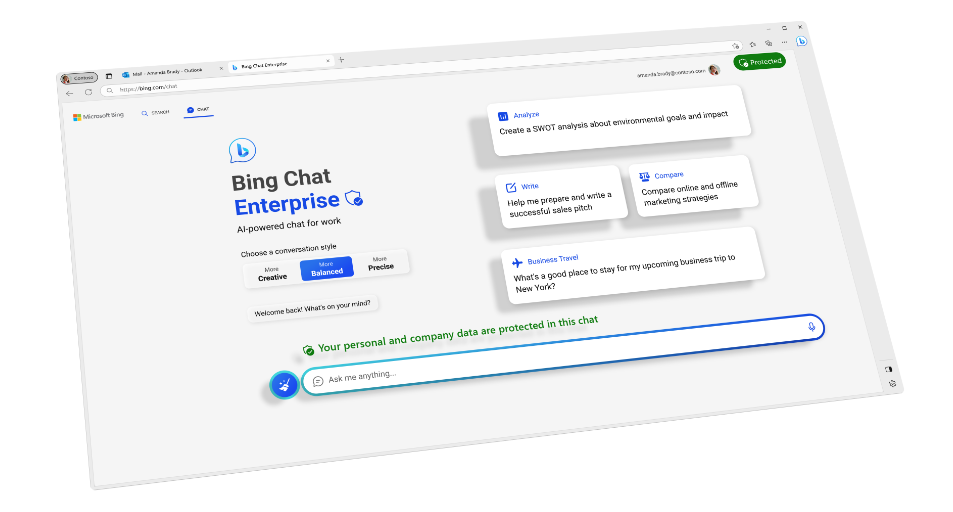The world of natural language processing (NLP) has seen rapid advancements in recent years, with language models like GPT-4 revolutionizing the way we interact with AI.
As we delve into the future of NLP, it’s essential to explore the potential of these AI-powered systems, understand their limitations, and anticipate their potential impact on various industries.
In this comprehensive guide, we’ll take a deep dive into GPT-4, discuss the future of NLP, and investigate what lies beyond the current state of AI language models. 🚀
GPT-4: A Leap Forward in Language Modeling
GPT-4, the latest model in the Generative Pre-trained Transformer series, is a groundbreaking AI language model that has taken NLP to new heights.
In this section, we’ll explore the inner workings of GPT-4, its advancements over GPT-3, and its potential applications in various industries.
How GPT-4 Works?
GPT-4 utilizes a transformer-based architecture, which allows it to efficiently process large amounts of text data.
By pre-training the model on vast corpora and fine-tuning it on specific tasks, GPT-4 can generate human-like text with minimal input. For instance, given a prompt like “write a summary of this article,” GPT-4 can provide a coherent and relevant response.
Advancements over GPT-3
Compared to its predecessor, GPT-4 boasts a significantly larger parameter count, allowing for more intricate and nuanced language generation. This has led to substantial improvements in text generation quality, response coherence, and the model’s ability to handle complex tasks.
Applications of GPT-4
GPT-4 has a wide range of applications, from content generation and summarization to chatbot development, code generation, and even music composition. As we look to the future, the possibilities of GPT-4 seem endless.
GPT-4 and AI Advancements
The Generalized Pre-trained Transformer 4 (GPT-4) is the latest iteration of OpenAI’s language model series. As a successor to GPT-3, GPT-4 boasts an even more advanced architecture, making it a powerhouse in NLP.
GPT-4 is trained on a massive dataset, allowing it to generate human-like text with unprecedented accuracy. It can understand context, generate coherent answers to questions, and even perform complex tasks such as code generation.
With these capabilities, GPT-4 has the potential to revolutionize industries like customer support, content creation, and software development.
For example, GPT-4 could be used to create a customer support chatbot that can understand and respond to user queries with natural language.
This would significantly reduce the need for human customer support agents and provide a more efficient, cost-effective solution.
Language Models Shaping the Future
GPT-4 and other language models are shaping the future of NLP by making AI-powered tools more accessible and versatile. One notable application is in the realm of content creation, where AI-generated text can save time and resources.
Consider an example where a marketing team uses GPT-4 to generate SEO-friendly blog content.
By inputting a few keywords and a topic, GPT-4 could generate a well-structured, engaging article in a matter of seconds.
GPT-4 Applications in Various Industries
The applications of GPT-4 extend far beyond customer support and content creation. Industries like finance, healthcare, and education can also benefit from its capabilities.
For instance, GPT-4 could be used to:
- Generate financial reports
- Summarize medical literature
- Create personalized learning materials for students
Ethics and Challenges of NLP
Despite its potential benefits, GPT-4 raises ethical concerns and challenges.
As AI-generated content becomes more sophisticated, distinguishing between human-generated and AI-generated content could become increasingly difficult. This has implications for privacy, misinformation, and job displacement.
GPT-4 and the Future of AI-Powered Tools
As NLP technology continues to advance, we can expect AI-powered tools like GPT-4 to become even more accessible and versatile. This will enable businesses to streamline processes, improve efficiency, and drive innovation.
Conclusion
The future of NLP, with GPT-4 at the forefront, promises to revolutionize AI-powered applications and industries.
As we continue to explore the capabilities of language models like GPT-4, it’s essential to remain mindful of the ethical considerations and challenges that accompany these advancements.
FAQs
What is GPT-4?
GPT-4, or Generalized Pre-trained Transformer 4, is the latest iteration of OpenAI’s language model series. It’s an advanced NLP model that can generate human-like text, understand context, and perform complex tasks such as code generation.
How does GPT-4 differ from GPT-3?
GPT-4 has an even more advanced architecture compared to GPT-3, making it more powerful and accurate in generating human-like text. It’s trained on a larger dataset, which allows it to better understand context and generate more coherent responses.
What industries can benefit from GPT-4?
Industries like customer support, content creation, software development, finance, healthcare, and education can benefit from GPT-4’s capabilities.
It can be used for tasks such as generating financial reports, summarizing medical literature, and creating personalized learning materials for students.
What are the ethical concerns surrounding GPT-4?
Ethical concerns related to GPT-4 include privacy, misinformation, and job displacement. As AI-generated content becomes more sophisticated, it becomes increasingly difficult to differentiate between human-generated and AI-generated content.
This has implications for privacy, the spread of misinformation, and the potential for job loss in certain industries.
How can GPT-4 be used in content creation?
GPT-4 can be used to generate well-structured, engaging, and SEO-friendly content by inputting a few keywords and a topic.
It can save time and resources by automating the content creation process, allowing businesses to focus on other aspects of their marketing strategies.
Thank you for reading our blog, we hope you found the information provided helpful and informative. We invite you to follow and share this blog with your colleagues and friends if you found it useful.
Share your thoughts and ideas in the comments below. To get in touch with us, please send an email to dataspaceconsulting@gmail.com or contactus@dataspacein.com.
You can also visit our website – DataspaceAI


